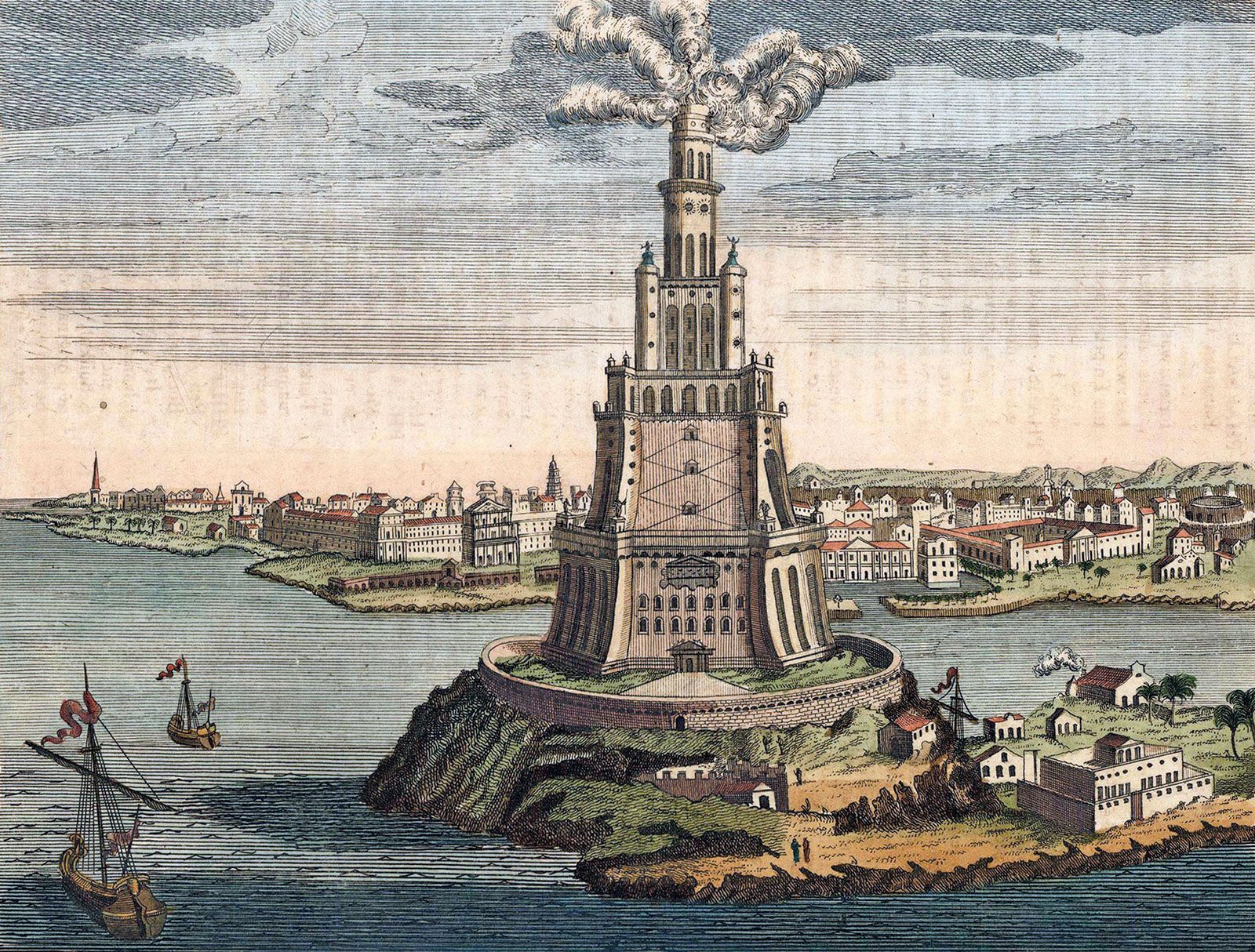Welcome to Facts Vibes! Today, we’re shedding light on the fun facts about the mesmerizing Lighthouse of Alexandria. Join us as we unveil the mysteries and history surrounding this ancient marvel that has stood the test of time. Let’s dive into the fascinating world of this iconic structure.
The Fascinating History and Engineering Wonders of the Lighthouse of Alexandria
The lighthouse of Alexandria is a remarkable feat of ancient engineering and a testament to the ingenuity of its creators. Built in the 3rd century BC on the island of Pharos, it stood as a guiding beacon for sailors navigating the treacherous waters of the Mediterranean Sea. Its construction marked a significant milestone in the history of lighthouse design and maritime navigation.
The lighthouse of Alexandria was not only a practical aid to navigation but also a symbol of the wealth and power of the Ptolemaic Kingdom. Standing at an impressive height of around 100 meters, it was one of the tallest structures of its time, and it was said that its light could be seen from a distance of up to 50 kilometers.
Engineered with precision and innovation, the lighthouse featured a mirror system to reflect sunlight during the day and a fire-powered light at night. This advanced technology allowed it to serve as a navigational aid around the clock, ensuring the safety of countless ships and their crews.
The lighthouse of Alexandria endured for centuries, but unfortunately, it was eventually destroyed by a series of earthquakes in the 14th century. Despite its ultimate fate, the legacy of this ancient marvel lives on in the annals of engineering and maritime history, serving as a testament to the vision and technical prowess of its creators.
Most popular facts
The Lighthouse of Alexandria was one of the Seven Wonders of the Ancient World.
Yes, the Lighthouse of Alexandria was one of the Seven Wonders of the Ancient World.
It was built in the 3rd century BC on the island of Pharos in Alexandria, Egypt.
The Pharos Lighthouse was built in the 3rd century BC on the island of Pharos in Alexandria, Egypt.
The structure stood at an estimated height of 100-120 meters, making it one of the tallest man-made structures in the world at that time.
The structure stood at an estimated height of 100-120 meters, making it one of the tallest man-made structures in the world at that time.
The lighthouse was designed by the Greek architect Sostratus of Cnidus.
The lighthouse was designed by the Greek architect Sostratus of Cnidus.
Its purpose was to guide sailors into the port of Alexandria using a system of mirrors and fire at the very top.
The purpose of the system was to guide sailors into the port of Alexandria using a system of mirrors and fire at the very top.
The lighthouse was damaged by several earthquakes over the centuries.
The lighthouse was damaged by several earthquakes over the centuries.
One of the most destructive earthquakes occurred in 1303 AD, causing significant damage to the structure.
One of the most destructive earthquakes occurred in 1303 AD, causing significant damage to the structure.
The lighthouse continued to function for over 1500 years before it was eventually destroyed by another earthquake in the 14th century.
The lighthouse continued to function for over 1500 years before it was eventually destroyed by another earthquake in the 14th century.
Some of the fallen stones from the lighthouse were used to build the Citadel of Qaitbay, which now stands on the site of the original structure.
The fallen stones from the lighthouse were used to build the Citadel of Qaitbay.
The Lighthouse of Alexandria inspired the design of many other lighthouses around the world.
The Lighthouse of Alexandria inspired the design of many other lighthouses around the world.
Its construction and use of reflective mirrors to increase the visibility of the light are considered engineering marvels of the ancient world.
The construction and use of reflective mirrors to increase the visibility of light are considered engineering marvels of the ancient world.
The lighthouse’s light could reportedly be seen from a distance of up to 29 miles out to sea.
The lighthouse’s light could reportedly be seen from a distance of up to 29 miles out to sea.
It is believed that the tower was also used as a defensive fort during times of invasion.
The tower was also used as a defensive fort during times of invasion.
The architectural style of the lighthouse combined Greek and Egyptian influences, reflecting the cultural fusion of the era.
The architectural style of the lighthouse combined Greek and Egyptian influences, reflecting the cultural fusion of the era.
Today, the location of the ancient lighthouse is a popular diving destination, with some remnants of the structure still visible underwater.
Sure! The ancient lighthouse is now a popular diving destination, with some remnants of the structure still visible underwater.
In conclusion, the lighthouse of Alexandria is a fascinating piece of history that continues to captivate people with its intriguing facts and mysteries. Its legacy as one of the Seven Wonders of the Ancient World and its impact on maritime navigation make it an enduring symbol of human ingenuity and innovation. The remarkable engineering behind its construction and the role it played in shaping the ancient world showcase the enduring legacy of this iconic structure.
